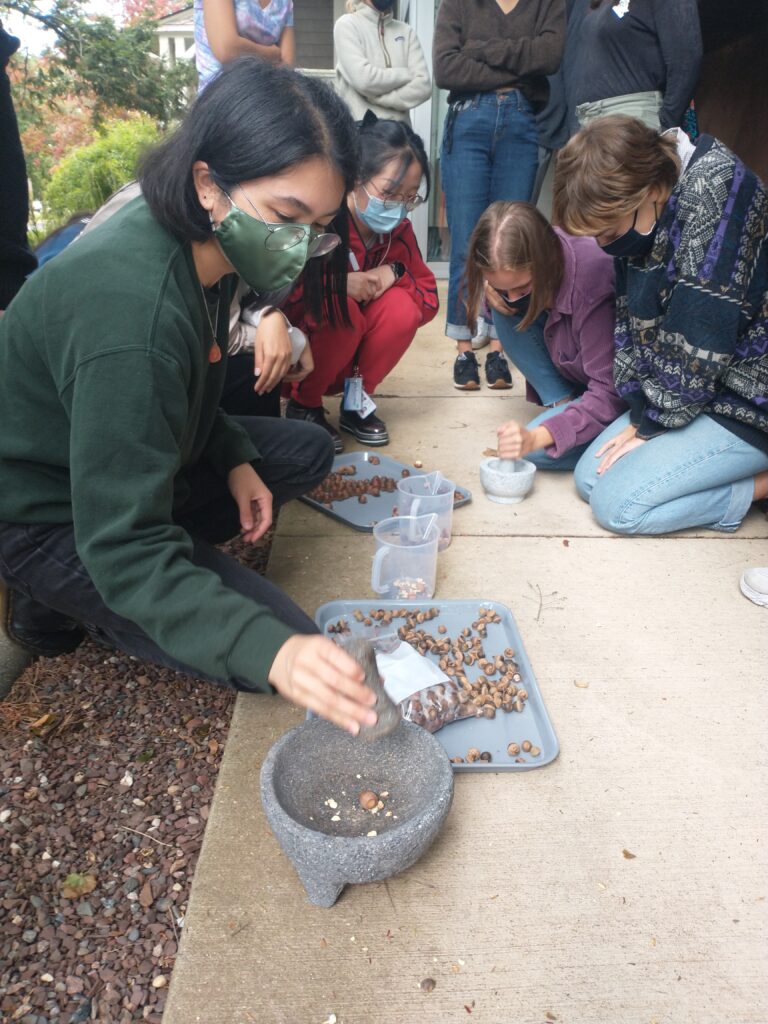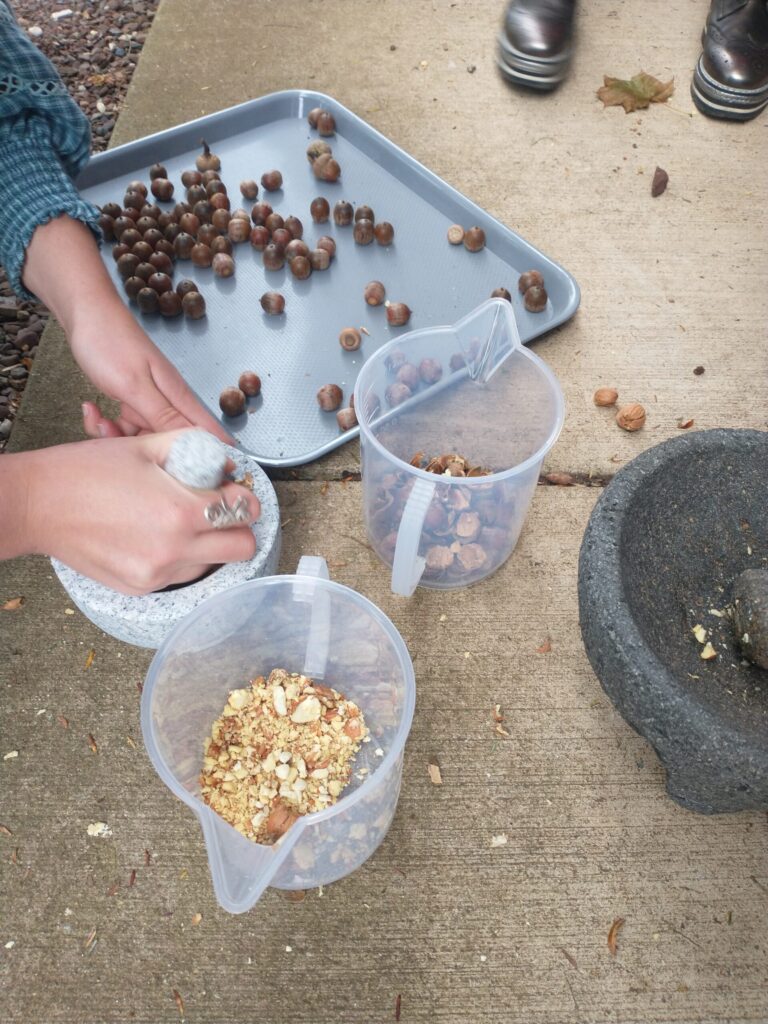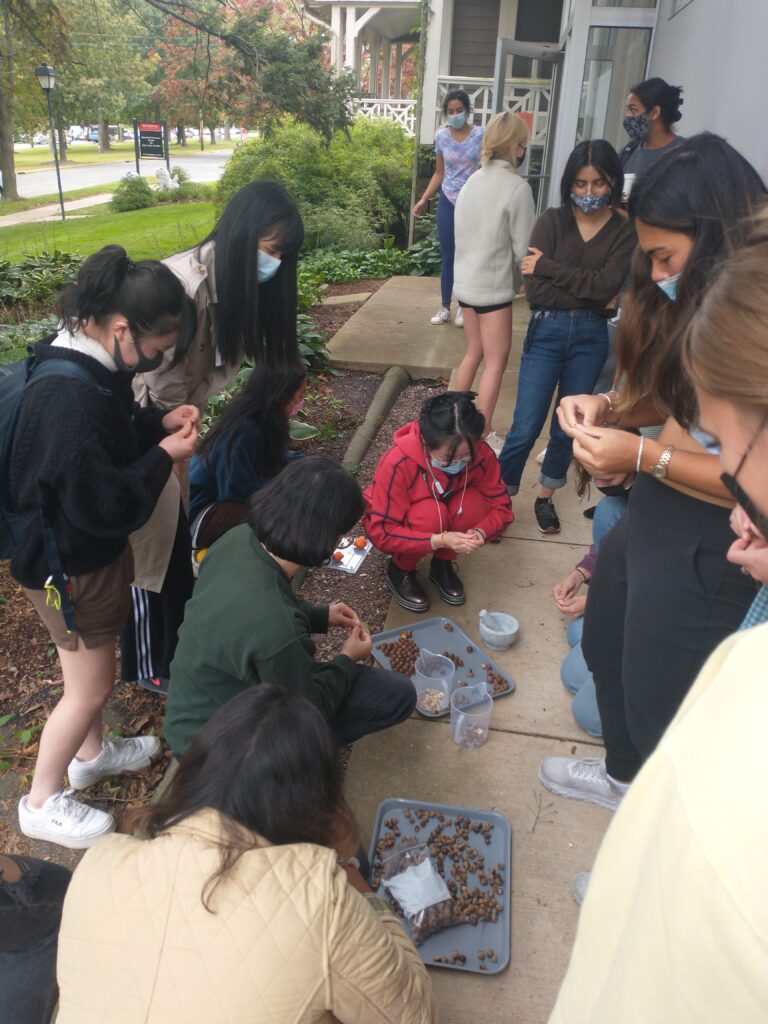Acorns in the Pleistocene-Holocene Transition
Fall 2021
Report by Ruby DiCarlo (’23) and Avnish Kulkarni (’24)
In Professor Brunson’s ARCP291 East Asian Archaeology class, students learn about archaeological cultures from China, Mongolia, North & South Korea, and Japan, dating from the Early Paleolithic all the way to more recent historic periods. In particular, students learn about the diverse human subsistence strategies which developed across East Asia, discussing everything from hunting and gathering, to the environmental consequences of agriculture, to long-distance trade interactions. One topic that we focused on this year was food-ways during the Pleistocene-Holocene transition. Acorns were an important source of protein for many hunter gatherers and early agricultural societies in East Asia. In fact, for much of human history acorns have been integral protein sources to a range of diets, and are even still present in the diets of some indigeneous groups across East Asia and North America. Students in this class studied excavated tools known as grinding stones, which archaeologists believe were used to process acorns. These grinding stones often resemble modern-day mortar and pestles. In class, students used mortars and pestles to crack and grind acorns that were collected below oak trees on the Wesleyan campus. Students then had the option to take the acorn nut meat home and refine it into acorn flour, a process that involves soaking, grinding, and drying to remove tannins. Many of the acorns we experimented with were already used as food for another organism–the larvae of the acorn weevil!–but we were still able to experiment with the complex processes involved in preparing acorns for food.



